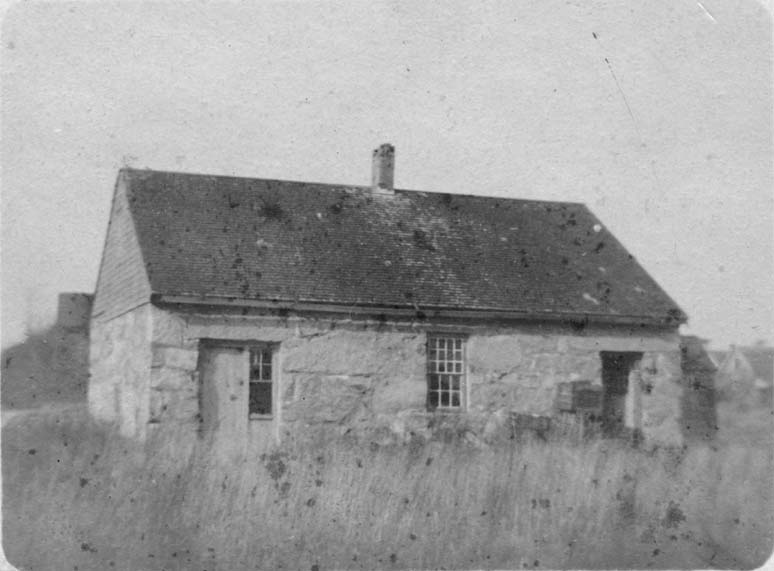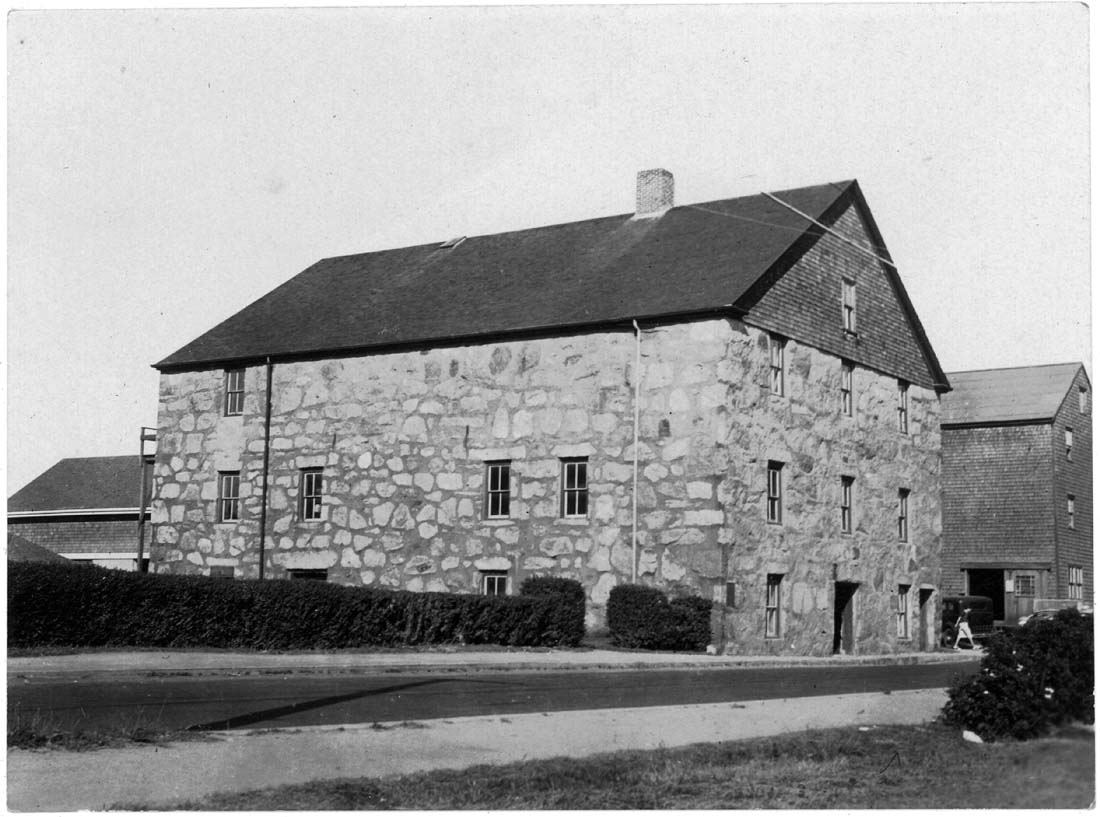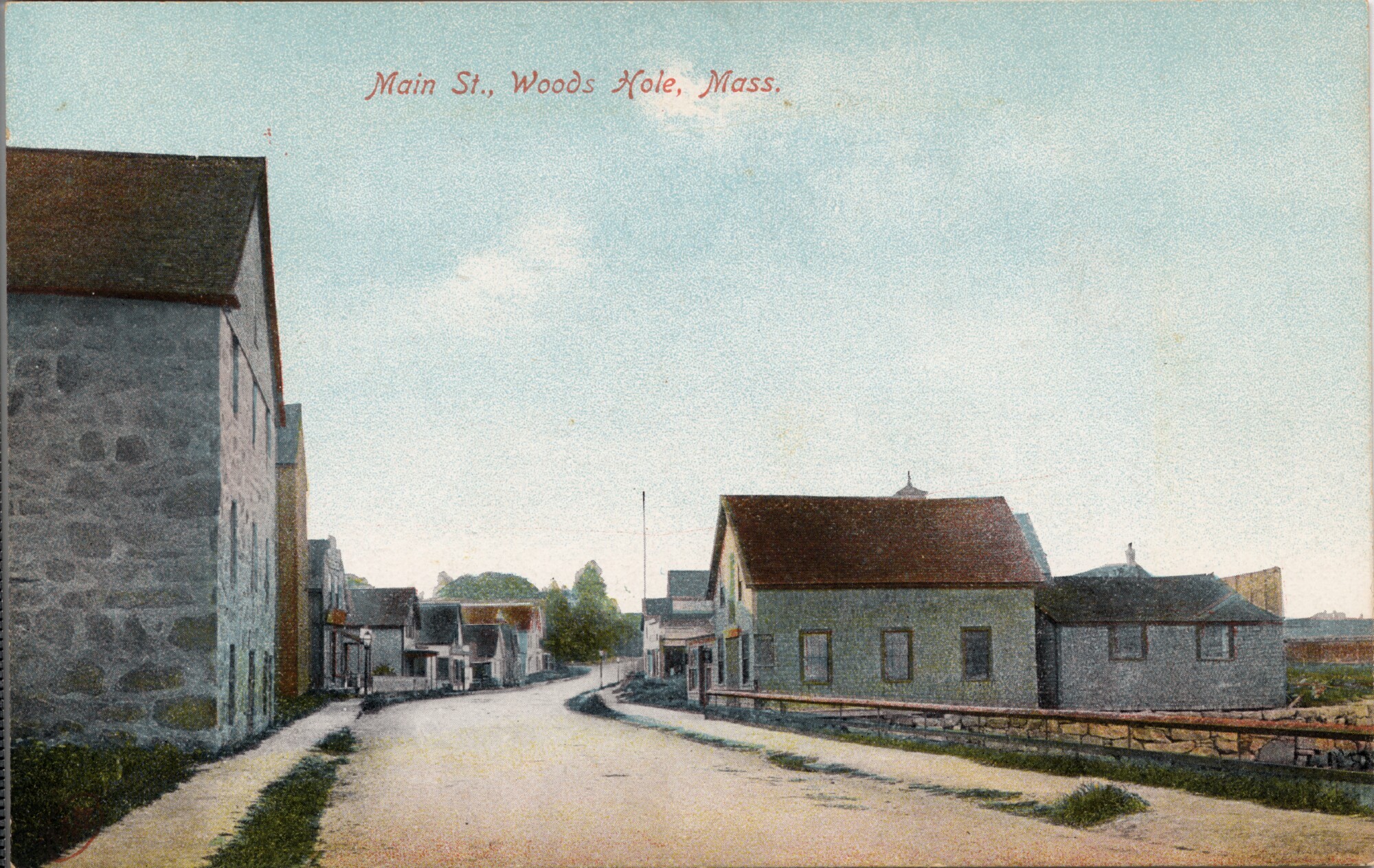- Introduction
- Early Years
- Fishing and Whaling
- The Guano Company
- The Fish Market
- Stores and Markets
- Drug Stores
- Garages and Parking Lots
- Coal
- Restaurants, Ice Cream Parlors, Bars
- Tea Rooms
- Hotels and Boarding Houses
- The Breakwater Hotel
- --------
- Walter Luscombe, Entrepreneur
- Franklin Gifford, Painter
- Michael Walsh, Gardener
- Barbers
- Blacksmiths
- Carpenters
- --------
- About
Fishing and Whaling
Woods Hole Used to Stink

The fish packing and dried fish business on the edge of Little Harbor must have sent some pungent odors into the village’s homes on the prevailing southwest wind. In 1828 another business brought more odors to town. Although owners, investors, captains and builders of the first large business in the village mostly lived in Falmouth, Woods Hole had the only deep-water port. Elijah Swift of Falmouth and Ward Mayhew Parker (of Woods Hole’s Parker family) began building whale ships in Woods Hole in the 1820s, doing business as the Bar Neck Wharf Company. This ship yard was located on Great Harbor (its location is now the Woods Hole Oceanographic’s dock, 89 Water Street).
The Bar Neck ship yard built a number of whaling ships and was also home to many more of the Swifts’ ships. Built on site were Uncas, Awashonks, Bartholomew Gosnold, Commodore Morris . Other Swift ships were the Sarah Herrick, Pocohontas, Brunette, Hobomok, Harriet, William Penn, George Washington and Popmunnett.
The new shipyard required a better road towards the western section of Woods Hole and a bridge over the outlet of Eel Pond, all of which was petitioned for in 1828. The lower section of Water Street became the new center of business in Woods Hole and housed not only the ship yard but numerous businesses serving the whaling industry: Marshall Grew’s whale boat works, along the Eel Pond channel; a try-works for processing whale oil, a candle manufacturing building which used spermaceti, a waxy substance found in the head cavities of sperm whales; a cooper’s shop for making barrels to house oil tryed-down on whaling voyages, and a bake shop which manufactured the dry biscuit (hard tack) which was taken on the average 3-year whaling voyage.
All the blubber which remained from a voyage, the whale oil and the associated processing added to the fishy, rotten stink of Woods Hole from 1828 to about 1864. Wagons rumbled up and down the street over the new bridge.

Franklin Lewis Gifford’s painting of the whaling waterfront of Woods Hole, c. 1870. The whaling industry was in decline at this point. One ship is fully rigged and the other, the Commodore Morris, is not (it has no upper masts or spars). The Candle House and the Bake House are beyond the Bar Neck Wharf. The Candle House manufactured spermaceti candles from spermaceti in the oil brought back from whaling voyages. The Bake House produced the hard tack eaten by crew on the long voyages. The Blacksmith shop is on the very right. The blacksmith made, among other iron items, hardware for whaling ships.
Courtesy Woods Hole Public Library.

The try-house (known as the “Old Stone House”). Here whale oil was further processed from the thick brown crude state achieved on the voyage on through a number of stages to a more refined product. Before the discovery of petroleum oil, whale oil was extremely valuable for lighting homes rather than using candle-light. Various types of whale oil were also used as a lubricant for watches, clocks and machinery.

